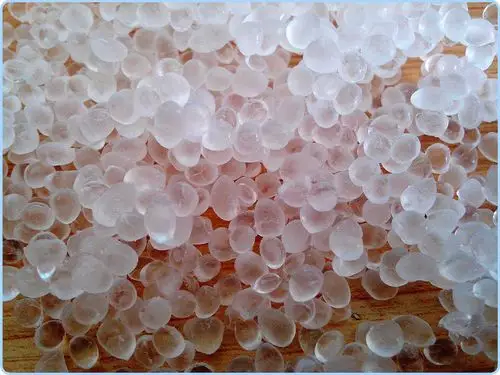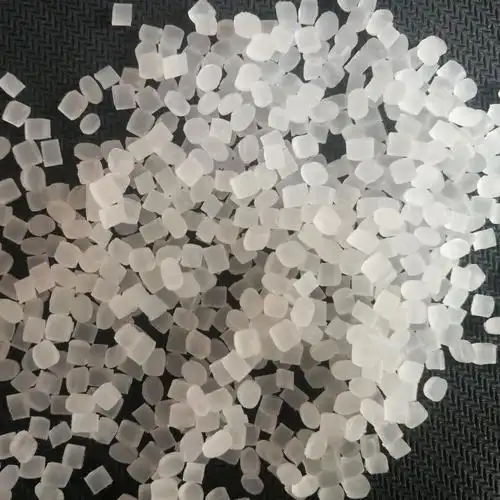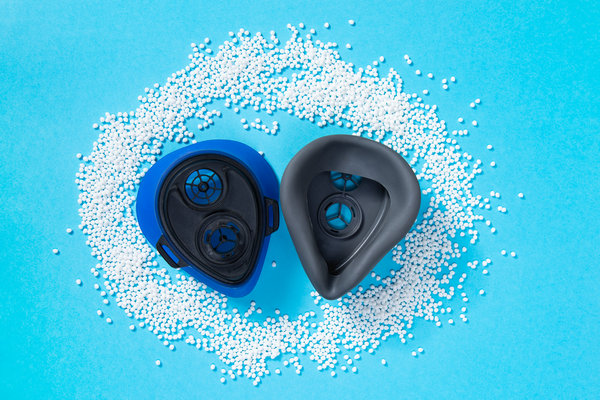As someone who’s spent years working in the materials science and polymer industry, I’ve had the privilege of diving deep into the fascinating world of thermoplastic elastomers (TPEs). These versatile materials, known for their rubber-like flexibility combined with the processability of plastics, are everywhere—from the soft grips on your toothbrush to the seals in your car’s engine. But how exactly are TPEs made? Let’s walk through the process step-by-step, exploring the science, the techniques, and the practical know-how behind their production, all while keeping things approachable and grounded in real-world applications.

What Are TPEs, and Why Do They Matter?
Before we dive into the manufacturing process, let’s set the stage. TPEs are a class of materials that combine the elasticity of rubber with the recyclability and ease of processing of thermoplastics. Unlike traditional vulcanized rubber, which is permanently set after curing, TPEs can be melted, reshaped, and reused. This makes them a go-to choice for industries like automotive, medical, consumer goods, and more.
I remember early in my career working on a project where we needed a material that could withstand repeated stretching without losing its shape, yet be molded into intricate designs for a medical device. TPEs were the answer, and understanding how they’re made opened my eyes to their incredible versatility.
The Building Blocks of TPEs
To understand how TPEs are made, we first need to know their core components. TPEs are typically copolymers or polymer blends, meaning they’re made by combining two or more types of polymers to achieve the desired properties. The main types of TPEs include:
Styrenic Block Copolymers (SBCs): Think of materials like SBS or SEBS, often used in soft-touch grips.
Thermoplastic Polyolefins (TPOs): Common in automotive parts like bumpers.
Thermoplastic Polyurethanes (TPUs): Known for durability, used in phone cases and footwear.
Copolyester TPEs (TPCs): Found in high-performance applications like hoses.
Thermoplastic Vulcanizates (TPVs): A blend of rubber and plastic, often used in seals.
Polyamide TPEs (TPAs): Used in specialized applications requiring high strength.
Each type has a unique recipe, but the manufacturing process generally follows a similar path. The key ingredients are polymer resins, fillers, plasticizers, and additives like stabilizers, colorants, or flame retardants. These components are carefully selected based on the final product’s requirements—whether it’s flexibility, heat resistance, or UV stability.

The Manufacturing Process: From Raw Materials to Finished TPE
Producing TPEs is a blend of chemistry, engineering, and precision. Over the years, I’ve seen how small tweaks in the process can make a big difference in the material’s performance. Here’s a breakdown of how TPEs are made, step by step.
1. Raw Material Selection and Preparation
The journey begins with choosing the right raw materials. The base polymers—whether styrene, olefins, or urethanes—are sourced as pellets or powders. These are often combined with additives to enhance properties like elasticity, durability, or color. For example, in one project, we used a specific grade of SEBS with a high molecular weight to achieve a super-soft feel for a wearable device.
The raw materials are tested for quality, as even minor impurities can affect the final product. They’re then dried to remove moisture, which can cause defects during processing. This step is critical, as I learned the hard way when a batch of TPE pellets absorbed humidity and led to bubbles in the molded parts.
2. Compounding: Blending the Ingredients
Compounding is where the magic happens. The raw polymers, fillers, and additives are mixed in precise ratios to create a uniform blend. This is typically done in a twin-screw extruder, a machine that melts and kneads the materials together under controlled heat and pressure.
During my time working on a TPO for automotive seals, we spent weeks fine-tuning the compounding process. Too much filler made the material brittle, while too little reduced its cost-effectiveness. The extruder’s screw design, temperature zones, and mixing speed all play a role in ensuring a consistent blend. The output is a molten TPE compound, which is cooled and pelletized into small granules for further processing.

Here’s a simplified look at typical components in a TPE formulation:
|
Component |
Purpose |
Example |
Typical Percentage |
|---|---|---|---|
|
Base Polymer |
Provides core structure and elasticity |
SEBS, TPU, or PP |
50–80% |
|
Plasticizer |
Enhances flexibility |
Mineral oil |
10–30% |
|
Filler |
Improves strength or reduces cost |
Calcium carbonate |
5–20% |
|
Additives |
Adds specific properties (e.g., UV resistance) |
Antioxidants, colorants |
1–5% |
3. Processing: Shaping the TPE
Once the TPE compound is pelletized, it’s ready to be shaped into final products. The beauty of TPEs is their versatility in processing. The most common methods are:
Injection Molding: Used for complex shapes like grips or medical components. The TPE pellets are melted and injected into a mold, where they cool and solidify. I once worked on a project where we molded TPE over a rigid plastic core to create a dual-material handle—precision in temperature control was key to avoid warping.
Extrusion: Ideal for continuous shapes like tubing or seals. The molten TPE is pushed through a die to form profiles. I’ve seen this used extensively in automotive weatherstripping, where consistency is critical.
Blow Molding: Used for hollow parts like bottles or bellows.
3D Printing: Emerging as a niche method for prototyping TPE parts.
Each method requires careful control of temperature, pressure, and cooling rates. For instance, TPEs typically melt between 150–220°C, depending on the type. Too hot, and the material degrades; too cool, and it won’t flow properly. I recall a late-night troubleshooting session where we adjusted the mold temperature by just 5°C to fix a flow issue in a TPU phone case.
4. Post-Processing and Quality Control
After shaping, TPE products often undergo post-processing, such as trimming excess material or surface treatments for better aesthetics. Quality control is rigorous—samples are tested for tensile strength, elongation, hardness (using a Shore durometer), and environmental resistance. In one project, we had to ensure a TPE seal could withstand 10,000 flex cycles without cracking, which meant countless hours in the lab.

5. Recycling and Sustainability
One of TPEs’ biggest advantages is their recyclability. Scraps from production can be reground and reused, reducing waste. I’ve worked with manufacturers who’ve implemented closed-loop systems, where offcuts are fed back into the extruder. This not only saves costs but also aligns with growing demands for sustainable materials.
Challenges in TPE Production
Making TPEs isn’t without its hurdles. Over the years, I’ve encountered issues like:
Material Inconsistency: Variations in raw material batches can affect performance. We once had to reject an entire shipment of filler because it altered the TPE’s clarity.
Processing Sensitivity: TPEs are picky about temperature and shear. I’ve seen molds fail because the material was overheated, causing degradation.
Cost vs. Performance: Balancing high-performance additives with cost is a constant challenge, especially for mass-produced consumer goods.
Real-World Applications and Why It Matters
TPEs are the unsung heroes of countless products. From the soft-touch grips on your gaming controller to the flexible tubing in medical devices, their unique properties make them indispensable. I’ve worked on projects where TPEs enabled breakthroughs—like a TPU-based prosthetic that was both durable and comfortable for long-term wear.
What excites me most is how TPEs continue to evolve. New formulations are pushing boundaries, like biodegradable TPEs for eco-friendly packaging or conductive TPEs for wearable electronics. The process of making them is as dynamic as the materials themselves.

Tips for Choosing the Right TPE
If you’re looking to use TPEs in a project, here are some practical tips based on my experience:
Define Your Requirements: Need high elasticity? Heat resistance? Clarity? Narrow down the TPE type early.
Work with Suppliers: Collaborate with material suppliers to customize formulations. They often have insights you won’t find in datasheets.
Test Extensively: Prototype and test under real-world conditions. I once saved a project by catching a UV degradation issue during testing.
Consider Processing: Ensure your equipment can handle the TPE’s melting point and flow characteristics.
Looking Ahead: The Future of TPE Manufacturing
The TPE industry is far from static. Advances in polymer chemistry are leading to greener, more durable TPEs. I’m particularly excited about bio-based TPEs, which could reduce reliance on petroleum-based materials. Automation and AI are also streamlining production, making it easier to achieve consistent quality at scale.
In my years in this field, I’ve seen TPEs go from niche materials to industry staples. Their production process, while complex, is a testament to how science and engineering can create materials that make our lives better, safer, and more comfortable.

Related Questions and Answers
Q: What’s the difference between TPE and traditional rubber?
A: TPEs are thermoplastics, meaning they can be melted and reshaped, while traditional rubber is thermoset and permanently set after curing. TPEs are also easier to recycle and process.
Q: Are TPEs environmentally friendly?
A: Many TPEs are recyclable, and some newer formulations are bio-based. However, their environmental impact depends on the specific type and how they’re disposed of.
Q: Can TPEs be used in high-temperature applications?
A: Certain TPEs, like TPUs or TPVs, can handle temperatures up to 120–150°C, but you’ll need to check the specific grade’s datasheet for limits.
Q: How do I choose the right TPE for my product?
A: Consider factors like flexibility, durability, environmental exposure, and processing method. Work with a supplier to match the TPE to your needs.





